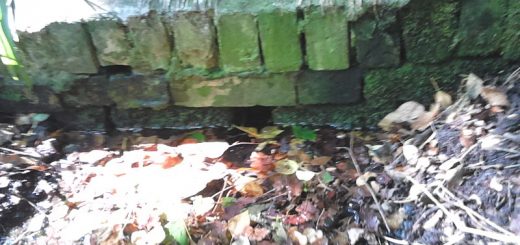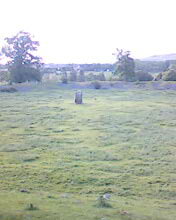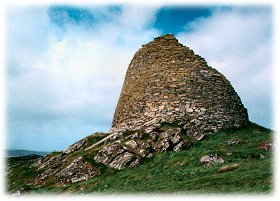St Canna’s Stone (aka St Canna’s Chair) & Fynnon Ganna (Canna’s Holy Well)
St Canna (Born 510AD) founded churches at both Llangan and Llanganna, though she is thought to have maintained her residence at Llangan (Llang-gan) in Carmarthenshire (not to be confused with Llangan in the Vale of Glamorgan). It is here in Llangan that we find her church and records of a holy well and a cubical shaped stone inscribed with the name ‘Carina’ that were associated with the saint. The well is no longer evident and I am unsure of the stones current location.
Wirt Sykes in his British Goblins (1881) explains that ‘among the existing stones in Wales with which the ancient ideas of occult power are connected, one in Carmarthenshire is probably unique of its kind. It is called Canna’s Stone, and lies in a field adjoining the old church of Llangan, now remote from the population whose ancestors worshipped in it. The church was founded by an Armorican lady of rank named Canna, who was sainted. The stone in question forms a sort of chair, and was used in connection with a magic well called Ffynon Canna [Ffynon Ganna], which is now, like the church, deserted and wretched. Patients suffering from ague, in order to profit by its healing power, must sit in the chair of Canna’s stone, after drinking of the water. If they could manage to sleep while in the chair, the effect of the water was supposed to be made sure. The process was continued for some days, sometimes for two or three weeks.’
The following description of the healing ritual and stone appeared in the Archaeologia Cambrensis (1875). ‘The church (Llangan) is a poor and dilapidated structure, now disused. The chair, a nearly cubical stone, slightly hollowed upon the upper surface, with the legend “Carina” running along its edge, stands or rather lies in an adjoining field. Tradition has assigned a peculiar virtue to this stone in connection with the sacred well now at a little distance from it, but formerly, to judge from the great moisture of the soil, springing up at its base. Patients, after bathing a specified number of times in the well, were required to sit or lie a certain number of hours on the stone; and it is asserted that the hollow on the surface was produced by the multitude and frequency of the devotees.’
The inscription on the stone did however provoke discussion on its authenticity which was also presented in the Archaeologia Cambrensis (1875) ‘Two distinguished members of the Association, daring the late Meeting at Carmarthen, expressed their opinion that this relic is not a genuine one’. It goes on to quote ‘Cambrians at Caermarthen’, “the inscription on this stone struck us as proving too much to be really genuine”. The reasons assigned for supposing it to be “the work of a recent botcher” are certain irregularities in part of the inscription, which is simply the Latinised form of the saint’s name canna. The first three letters seem to be acknowledged as original. The last three are certainly not so well formed, and the final a. has no cross line, but still they are of the same character as the three first, and it can hardly be doubted that the two portions are of the same time, if not by the same hand. Whatever difference exists is partly accounted for by the awkward position in which the artist had to stand or sit, and partly by the form of the stone. If the first portion of the word is genuine, the latter must be considered the same, for it may be assumed as probable, that if any later attempt were made to complete the name, care would have been taken to have copied more accurately the first three letters…..The very botching, especially when the nature and position of the stone are taken into consideration, might therefore be considered as an argument for the genuineness of the whole.
In the mid 19th century the water levels of the nearby spring and the well were equalised when earth between the two was removed. This effectively this made the well disappear. Recollections about the well describe hundreds on pins being left my patients eager to be healed by its powers.




Recent Comments